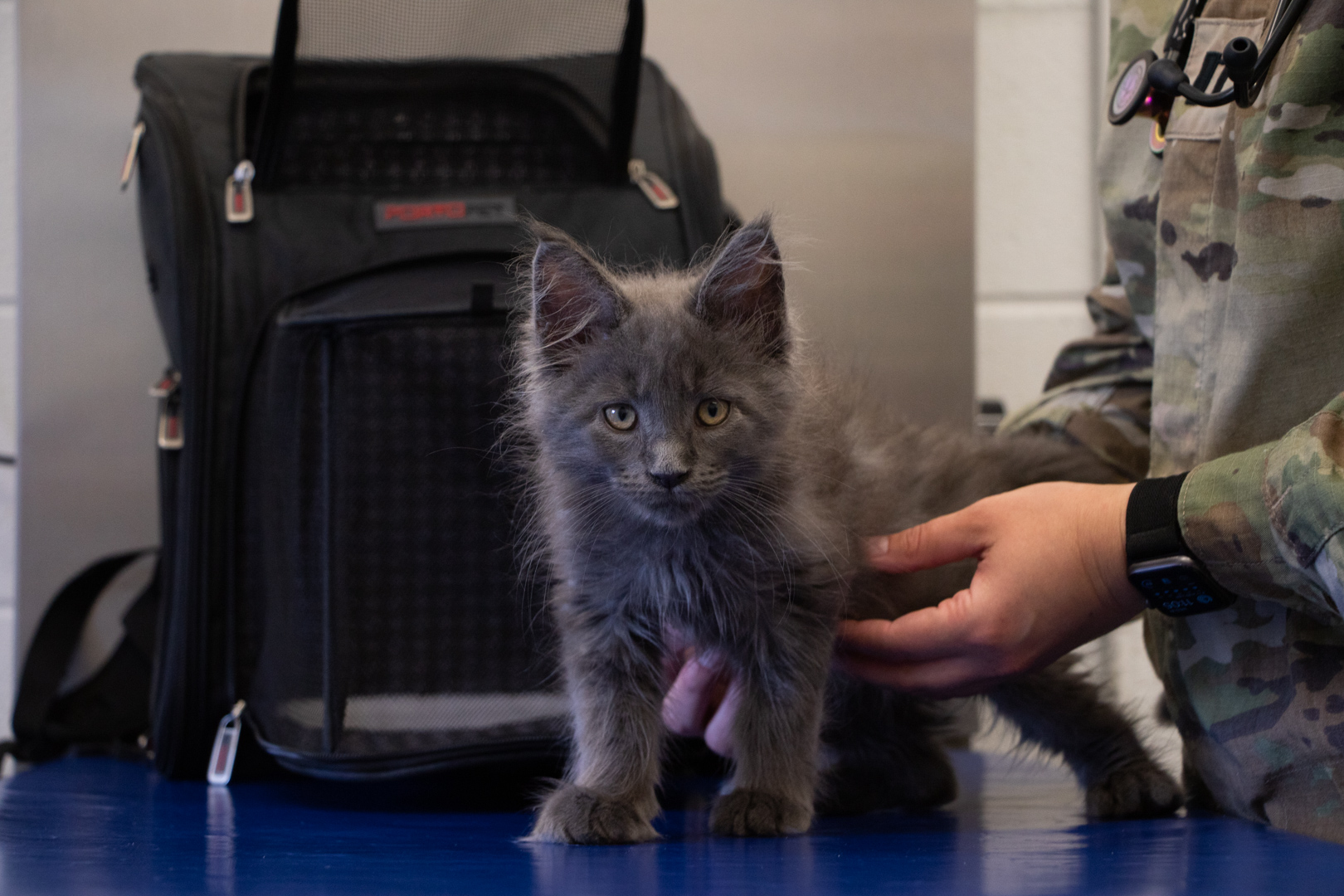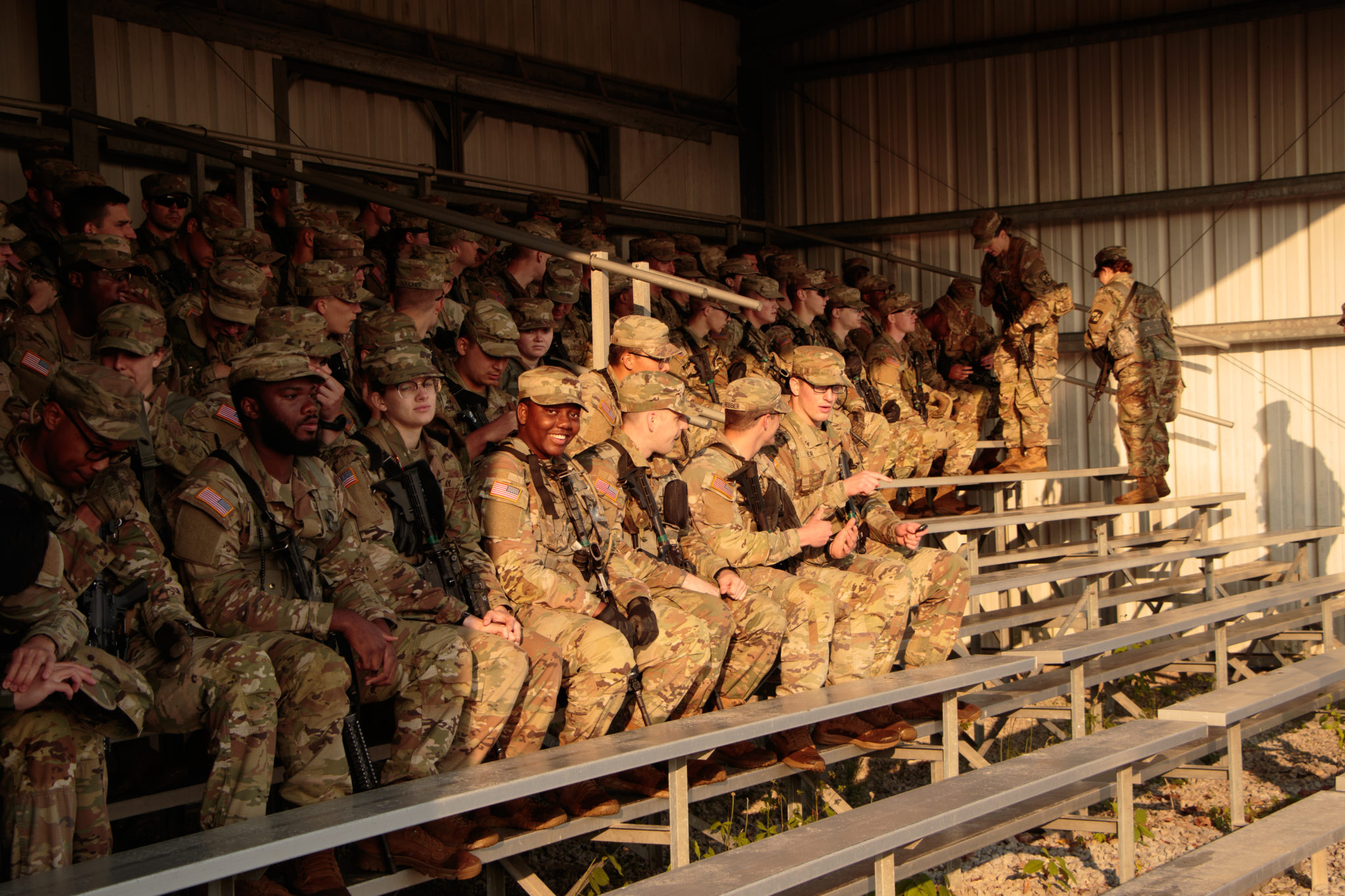Fort Knox, KY.- Have you ever leaned your body over a 64-foot tower and then jumped down that same tower? Well if you aren’t a professional sky diver or constant adventure seeker then I’m guessing your answer is no.
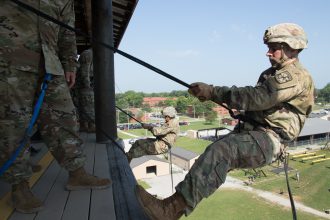
3rd Reg., Advanced Camp take on the Rappel Tower and put their fear of heights to the test. June 19. Fort Knox, Ky. Photo by AJ Barnes.
Today that’s exactly what the Third Regiment for Advanced Camp did at the Fort Knox Rappel Tower. Cadets started on a 20-foot appetizer wall before conquering the main course of 64 feet. The 20-foot wall gives the Cadets a small taste of what the 64-foot wall will be like. It also helps familiarize Cadets with the technique required to successfully get down the wall. The 20-foot wall is perfect for ensuring Cadets are coming down the wall correctly, delivering the correct verbiage needed when communicating with other Cadets, and ensuring that they can stop/break at any time during their rappel.
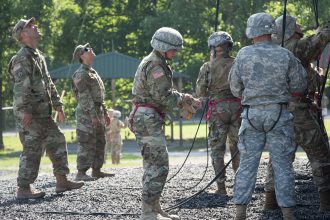
3rd Reg., Advanced Camp take on the Rappel Tower and put their fear of heights to the test. June 19. Fort Knox, Ky. Photo by AJ Barnes.
Technique isn’t the most important thing during this process though, the most important aspect of the wall is safety. No matter what is going on, the main objective for Cadets is to make sure that their gear is properly tied and tightened, and that they are safely strapped into their equipment. Safety means having your ropes checked every time you go up on the tower, doing a safety check while rappelling down the tower, and listening to your instructor to ensure you land on the ground safely. The rappel tower is surprisingly one of the safest places you can be.
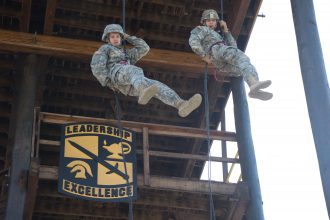
3rd Reg., Advanced Camp take on the Rappel Tower and put their fear of heights to the test. June 19. Fort Knox, Ky. Photo by AJ Barnes.
The 64-foot wall can be quite a challenge, but another wall that is equally as challenging is the 64-foot open wall-which really isn’t a wall at all. The open wall is actually just open air. You lean off the edge and use the same techniques you learned on the other wall, the only difference is you are sliding down rather than jumping off the wall. The open wall is described as the easier wall but this is where your technique counts because there is no wall to catch you. “Just get down with decent technique and you are good to go”, clarified Cadet Laura Snodgrass of Montana State University.
I bet you’re wondering what exactly is the point of it all? The rappel towers main purpose is to build confidence in your equipment, your fellow Cadets, and most importantly, yourself. “If you don’t trust your gear and you don’t know how to properly use it, then it’s not going to work”, explained Casey Frederick of Oklahoma State University.
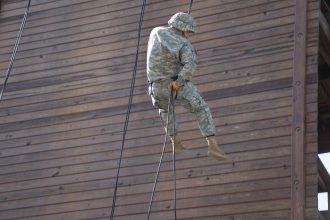
3rd Reg., Advanced Camp take on the Rappel Tower and put their fear of heights to the test. June 19. Fort Knox, Ky. Photo by AJ Barnes.
Despite some Cadets being a little fearful about going down the rappel tower, most of them really enjoyed their experience. They learned how to safely and effectively come down the tower and managed to get over their fears. For Cadet Kelli Vetter of Washington State University this was her third time going down. “It was really fun, I wasn’t nervous at all[this time], I was nervous the first time but it’s fun”, said Cadet Kelli Vetter of Washington State University.

